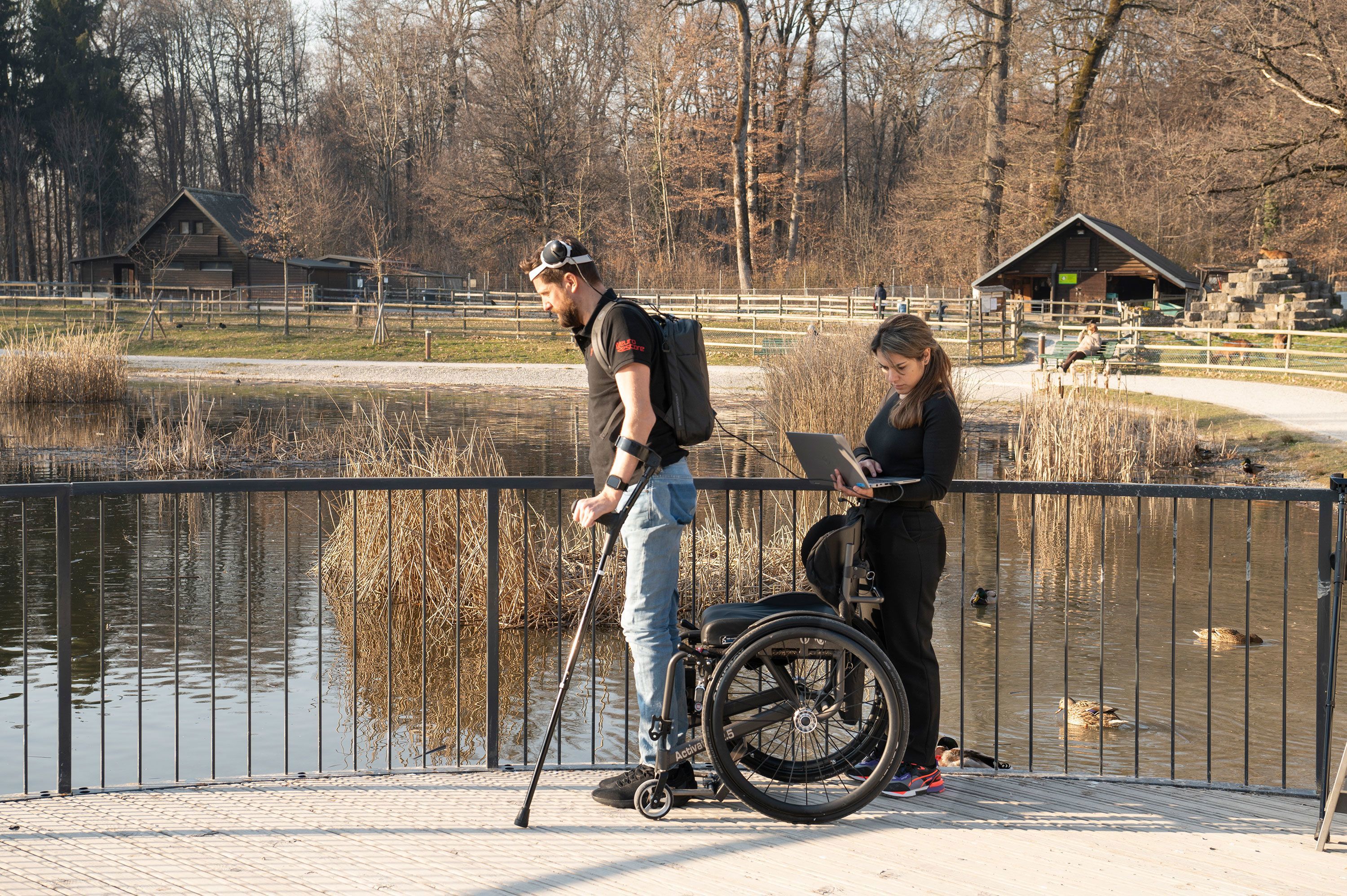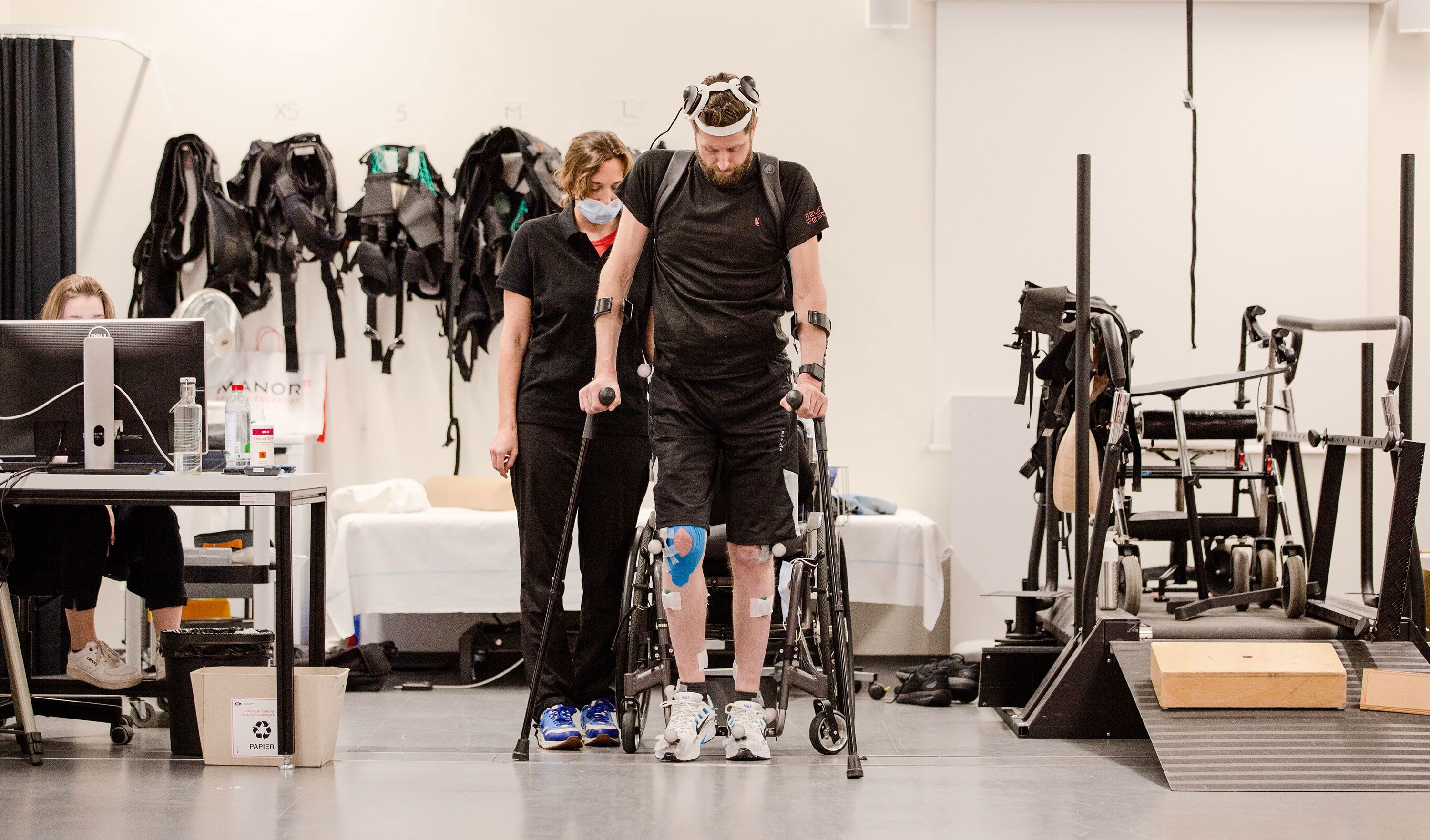New research has revealed how a medical device helped one man with paralysis walk naturally again, more than a decade after his injury.
Dr Grégoire Courtine and colleagues from the Swiss Federal Institute of Technology in Lausanne developed and implanted a "brain-spine interface" that creates a direct neurological link between the brain and spinal cord.
Implants in the brain track intentions for movement, which are wirelessly transferred to a processing unit that a person wears externally, like a backpack.
READ MORE: Rock legend Tina Turner dead at 83

The intentions are translated into commands that the processing unit sends back through the second implant to stimulate muscles.
The research findings, published today in the journal Nature, outline successful outcomes for one study participant from the Netherlands.
Gert-Jan Oskam, 40, was left paralysed after a motorbike accident in China more than a decade ago.
His legs were impaired, as well as his arms and trunk.
"My wish was to walk again, and I believed it was possible," Oskam said at a briefing with journalists this week.
READ MORE: Australian rich list revealed

"I tried many things before, and now I have to learn how to walk normal (sic) again, like natural, because this is how the system works."
Oskam said he can walk at least 100 metres, depending on the day, and stand without using his hands for a few minutes.
He said it's useful in his daily life, like when he recently had something to paint but had no one to help, so he stood and did it himself.
Previous research has shown that targeted electrical pulses can stimulate areas of the leg needed to walk.
But this new technology allows for smoother movements and better adaptations to changing terrain because it reconnects two regions of the central nervous system that were interrupted because of a spinal cord injury, according to the researchers.
READ MORE: Great-grandmother dies after alleged Tasering
Oskam had been implanted with stimulation devices previously, but he had to make a movement to trigger the stimulation.
"Now, I can just do what I want, and when I decide to make a step, the stimulation will kick in," he said.
Courtine said this stimulation is different because Oskam has "full control over the parameter of stimulation, which means that he can stop, he can walk, he can climb up staircases."
After surgeries to implant the devices, the neurological communication channels were established quickly.
Oskam was taking steps within a day of training.
And the connection has remained reliable for more than a year, including time Oskam spent at home.
Walking independently with aid from the "digital bridge" has also helped him regain enough strength to take some steps even when it is turned off.
Oskam was the first participant in the trial, but researchers are hopeful about future possibilities.
This research validates the possibility of re-creating a neurological link between the brain and spinal cord, and the connection happens quickly.
Expanding the scope of that connection could also help people who have arm and hand paralysis or who've had a stroke, they say.
But they'd like to reduce the size of the system to make it more portable.
"The concept of a digital bridge between the brain and spinal cord augurs a new era in the treatment of motor deficits due to neurological disorders," the researchers wrote.
Sign up here to receive our daily newsletters and breaking news alerts, sent straight to your inbox.
